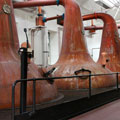Flavourings are used to bring taste and variety to foods
Nature offers an abundance of natural sources of flavouring substances, providing an infinite range of taste in food. Flavours have been added to foods since ancient Egyptian times, with the use of herbs and spices and aromatic extracts and oils. Modern flavourings provide the consumer with a wider sensory experience and have the added advantages of consistency of flavour and enhanced consumer safety.
In Europe and the UK, the manufacture and use of flavourings is governed by Regulation (EC) No. 1334/2008 on flavourings and certain food ingredients with flavouring properties for use in and on foods (as retained in GB).
The UK flavour industry has played a key role in the evolution of the global food industry, and is a world leader in the field of flavour and sensory science, investing significantly in research and development.
Our industry is constantly striving to improve the quality and taste of modern food products by creating new flavourings and optimising existing ones. The UK Flavour Association has been promoting the interests of the industry for over 100 years.
What are flavourings?
Flavourings are ingredients that are added to foods in very small amounts, either to give a specific flavour to a product, such as a soft drink, boiled sweet or yoghurt, or to enhance or replace flavour lost during food processing. Flavourings can either be produced from extracting the aromatic compounds from foods, or by manufacturing new compounds to excite our taste buds.
Why do we use them?
Culture: flavourings have long been used in food and drinks, meaning we tend to have a strong emotional connection to them, with certain flavours triggering memories. Just think about your favourite childhood sweets and the associations you have with them.
Healthy lifestyle: there’s increasing demand for healthier food product alternatives that taste great while contributing to healthier, more balanced eating habits – flavourings are an important enhancer of taste in products that are low in fat, salt and/or sugar. The flavouring industry develops solutions that enable the food industry to bring nutritional products to consumers in a palatable way.
Sustainability: the world’s resources are rapidly shrinking, but flavourings that are produced from cost and resource-efficient sources ensure we can continue to enjoy our favourite tastes.
Take a look at EFFA’s infographic for more information about the usage of flavourings.
How do I know if my food contains flavourings?
When flavourings are added to food, they will appear in the list of ingredients as 'flavouring' or a more specific description. Flavourings are generally added at between 0.1-2% of the food and are most commonly found in beverages, dairy products, confectionery, savoury snacks, and health and wellness products. They are also used in toothpastes, medicines, animal feed and tobacco products. Flavourings are not assigned E numbers.
Flavouring manufacturers, or 'Flavour Houses', and ingredient suppliers are the members of the UK Flavour Association. This flowchart shows how they fit into the wider food chain.

Distillers in countries
of origin

Industrial
factories

Membership

Flavour ingredient suppliers in
countries of origin

Flavour houses with application laboratories
Factories



Food and beverage manufacturers, oral care manufacturers, pharmaceutical, tobacco and animal feed products.
More information on the history of flavourings and how flavours are produced and used can be found on the EFFA website.


